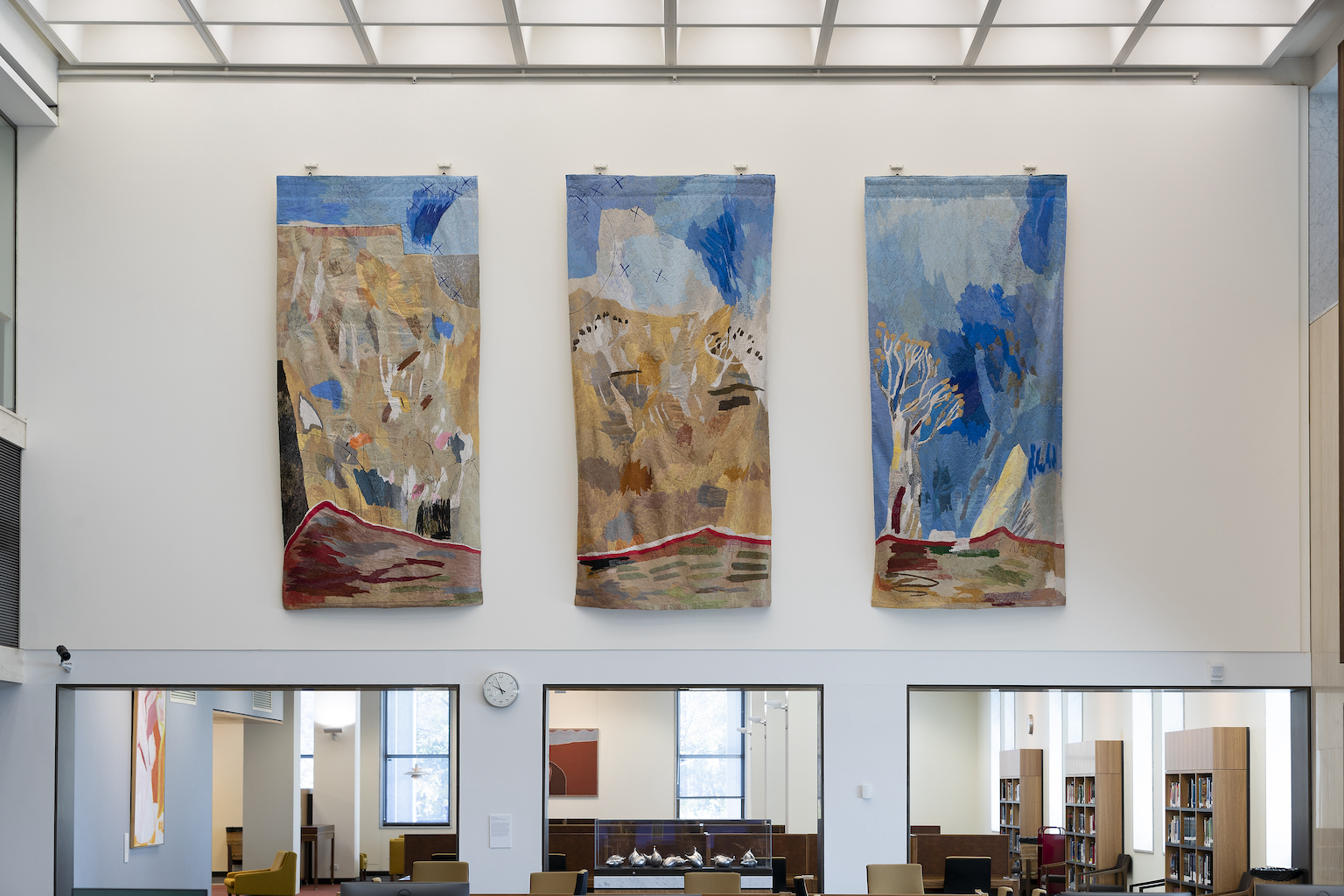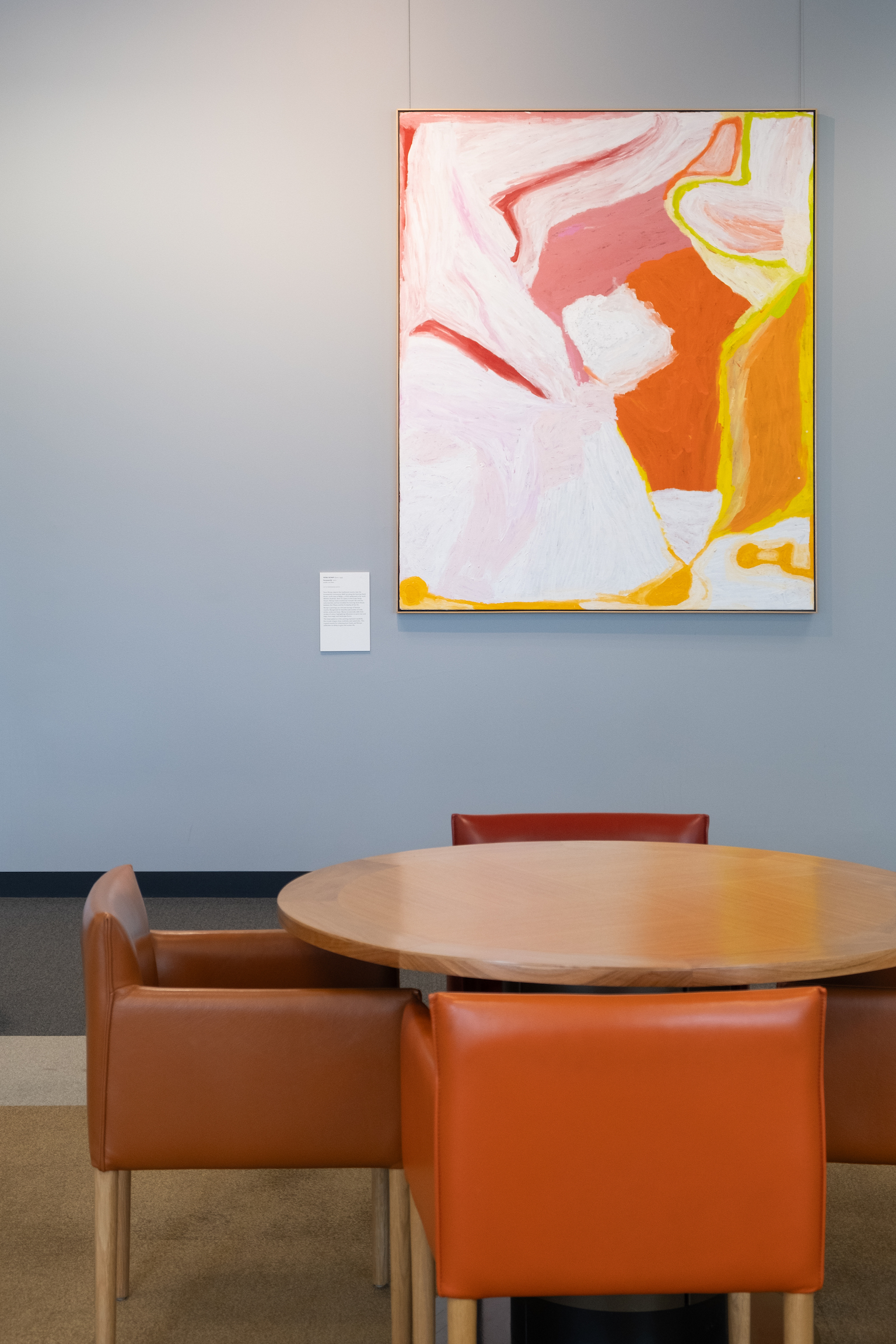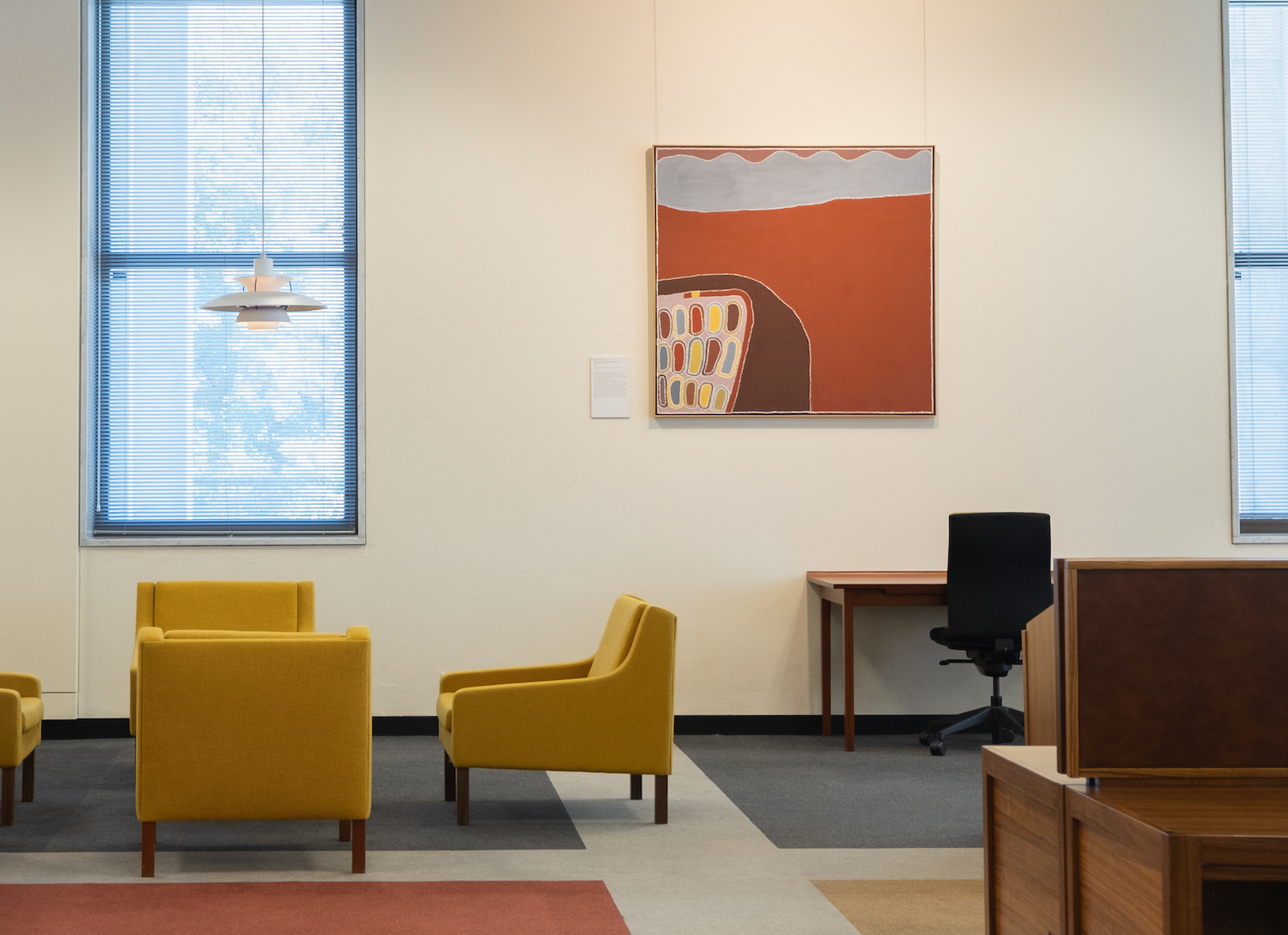Artwork in the Main Reading Room
The Main Reading Room is our largest reading room.
Australian Landscapes I–IV
Since 2001, four machine-embroidered panels by British textile artist Alice Kettle have been displayed in the Main Reading Room. Kettle estimates she used 5 million stitches over a period of 18 months to create the panels. Many of the fine threads are made from synthetic rayon and cotton. They 'capture the luminescence of the shifting light and the brilliance of the landscape'.

Alice Kettle (b.1961), Australian Landscapes I–IV 2000 ca.1998 ; 4 machine-embroidered tapestries, Main Reading Room
Three of the panels (pictured above) hang together and evoke a populated landscape, with impressionistic references to the Library's Maps Collection. The Southern Cross is depicted at the top of the centre and left-hand panels, and the red line and text across the foreground is from a map drawn in 1570 by Abraham Ortelius (1527–1598). A fourth panel, hanging at the opposite end of the room, features a single eucalypt.
Kettle conceived the panels as a commentary on relationships between readers and libraries and between people and landscapes. The works were commissioned and given to the Library by retiring Director-General Warren Horton, in memory of his wife, Patsy Hardy.
Kunawarritji
Kunawarritji by Nora Wompi was one of three works donated to the Library in 2015 to mark the 25th anniversary of the Friends of the National Library. The painting depicts the Wompi's traditional country near the Kunawarritji community in far north Western Australia, with lineal patterns representing the tali (sand hills) that dominate the country. The circular shapes represent the scarce rock holes and waterholes dotted throughout the desert.

Nora Wompi (b. 1935), Kunawarritji, 2012, synthetic polymer paint on linen ; 180 x 150 cm, Main Reading Room.
Nora Wompi was born in 1935 in the Great Sandy Desert at Lilparu. She lived a traditional nomadic life until her early twenties, and has travelled the Canning Stock Route between the Pilbara and the Kimberley all her life. Her art can be recognised by its beautiful pale washes of clotted creams and soft milky whites, pinks and blues, occasionally adding bold strokes of primary colour to highlight references to spirit men, spirit dogs, love magic and specific landscape forms.
The purchase of this painting was funded by Wesfarmers, and is located in the northern corner of the Main Reading Room.
Yab-yab-gnerni-gnim (Sugarbag Dreaming)
Donated by the Friends of the National Library to mark their 25th anniversary, Yab-yab-gnerni-gnim (Sugarbag Dreaming) is displayed in the Newspapers and Family History zone of the Main Reading Room. Vibrant and serene, the painting is perfectly balanced by a palette which is velvety and elegant, with natural ochres blended to produce a range of soft shades.

Minnie Lumai (b. 1940), Yab-yab-gnerni-gnim (Sugarbag Dreaming), 2009, natural ochre on canvas ; 130 x 125 cm, Main Reading Room.
There are three levels of meaning in this work. Not only does it describe the sugarbag, but it is also a landscape painting. The circular shapes depict the rocky country and the Bullo River which eventually ends as a spring, shown as the smaller red and yellow shapes at the end of the river. The third interpretation is the Dreamtime story of how the plains and hills were created by two kangaroos. Arguing over honey, the kangaroos eventually divide the country into two parts, creating the stony hills country and the flat open plains.
Minnie Lumai is Mirrawong, and works in Kununurra in the East Kimberley. Her country, within the Keep River National Park, is abundant with sugarbag – a wild bush honey and wax gathered from the hives of local bees.
Further reading
- A different view: the National Library and its building art 2004, Canberra: National Library of Australia, nla.gov.au/nla.cat-vn3083203
- National Library of Australia News August 2008 issue celebrated the 40th anniversary of the National Library building
Visit us
Find our opening times, get directions, join a tour, or dine and shop with us.